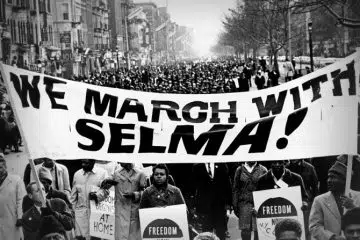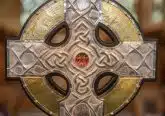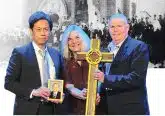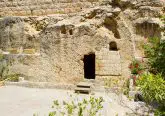The Catholic Moment: What does the cross mean to me?
Wednesday, April 29, 2009
By Scott Mussari
Certain things in our world are so prevalent and so present to us that oftentimes our eyes simply overlook them. These objects blend into the background; we’re desensitized to their impact. The beauty of a blue sky, the look on the face of a loved one, the fresh bloom of a spring lily — those are a mere sampling of the things we frequently and too easily take for granted, so they fail to affect us.
Perhaps the most powerful symbol that has been reduced to having the least impression on us is the cross. Although it’s depicted on everything from the tops of our churches to the bottoms of our neckties, from the front of our checkbook covers to the rear windows on our cars, we rarely see its significance.
The cross is jewelry. It’s common to catch a glimpse of the cross as nearly every type of accessory imaginable. It has been made into earrings, necklace charms, key holders, toe rings, lapel pins and even the more permanent decoration of tattoos s. None of these are inherently irreverent by their nature, but their existence shifts the significance of the cross from a spiritual tendency to a fashion trend where the primary purpose is not to prophesize but to accessorize.
The cross is suffering. We’re challenged to take up our own personal cross and carry it, to freely and willingly undergo the sacrifices we encounter in our ordinary existence. Accepting our cross, though, does not translate into tolerating abuse or oppression. Instead, it indicates we are to surrender our wants and wishes for the benefit of others and to humbly give of ourselves even when our desire might be to do otherwise.
The cross is death. A crucifix is a cross with Christ’s body still hanging, beaten and defeated, from it. It highlights the death of Jesus. The fact that the cross is a form of execution is not glossed over or kept hidden. The spotlight in this scenario shines on the dying and remains on the torture and pain of Good Friday.
The cross is life. The cross also points to the resurrection of Easter Sunday, moving beyond the conquering of death to the triumphant promise of eternal life. This style of ornate décor does not display Jesus’ physical body because the emphasis is that it cannot contain nor restrain Him.
The cross is hope. Being united and joined with Jesus is not reserved only for the next life, but is for the here and now. It is a calling for us to decide to live as Christians and to trust in the promise that we will be given the strength to do so. It is a commitment to remain steadfast to our faith no matter how difficult the trials become. It is clinging to the belief that through the aid of the Lamb of God we, too, can endure and continue on like a lion.
The cross is identity. The cross serves as a reminder of these characteristics of our religion and functions as a representation to the world of who we are. It classifies us as followers of Christ. As the body of the church, we are to embody anything the cross is and everything that it stands for — to become so close and familiar with the cross that our words and actions ought to be constantly guided by it, while still remaining distant and foreign enough to it that we can recognize its freshness and innovativeness; to always have our gaze fixed upon it, but to never lose focus of its meaning.
Scott Mussari is director of faith formation at St. Columban Church in Loveland and can be reached at [email protected].













